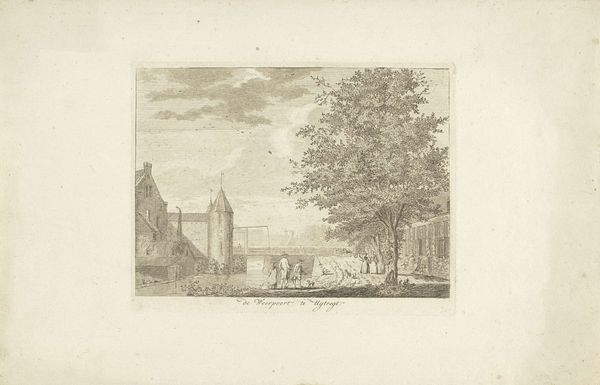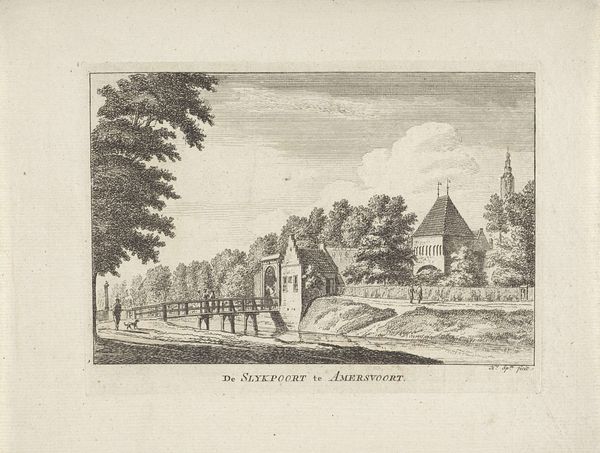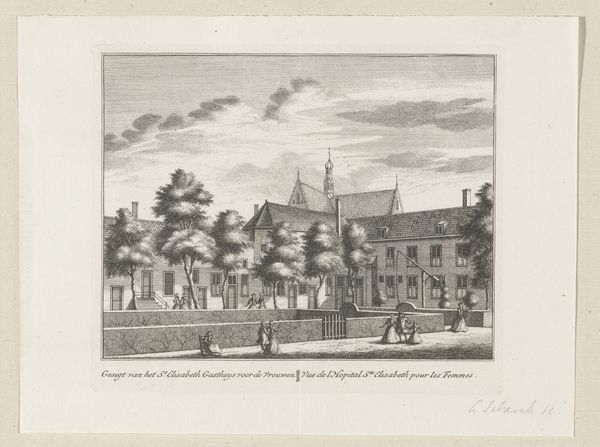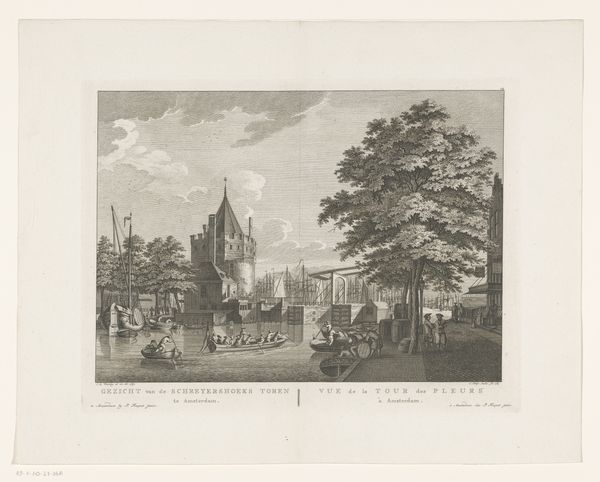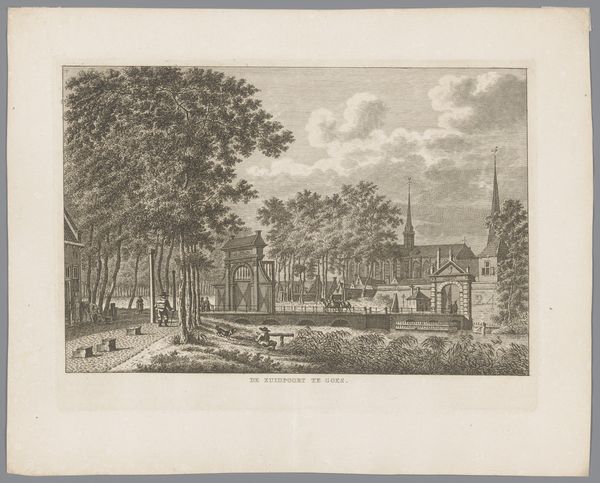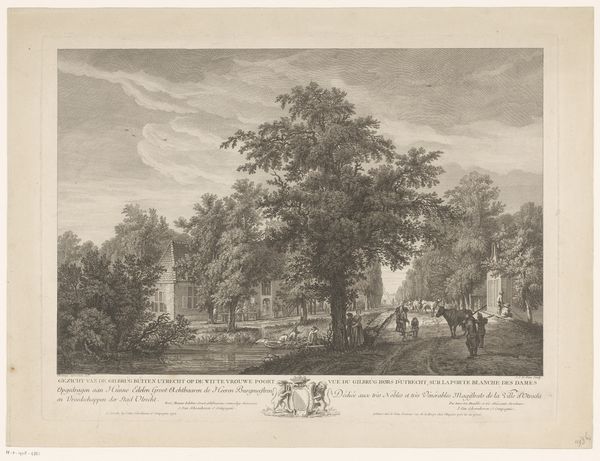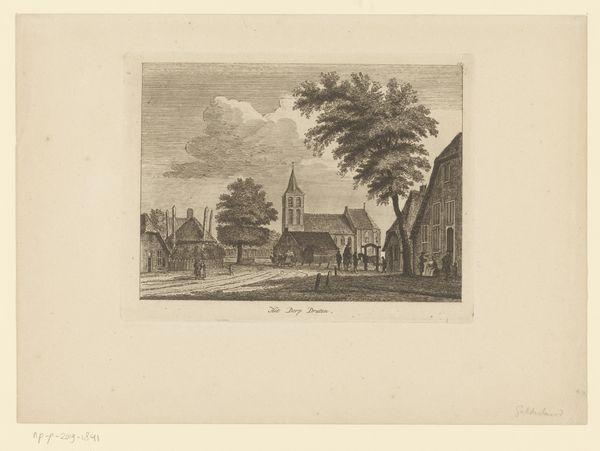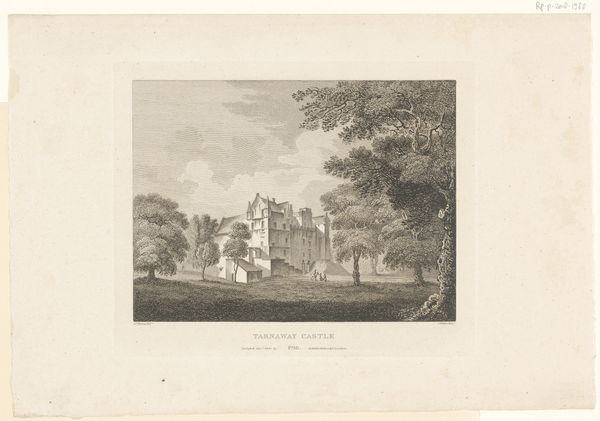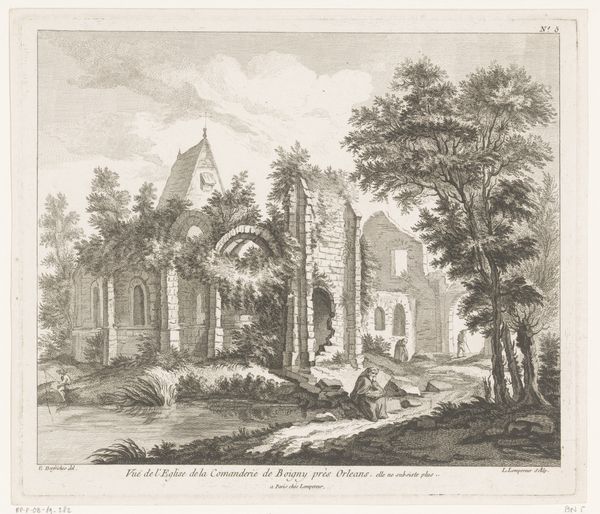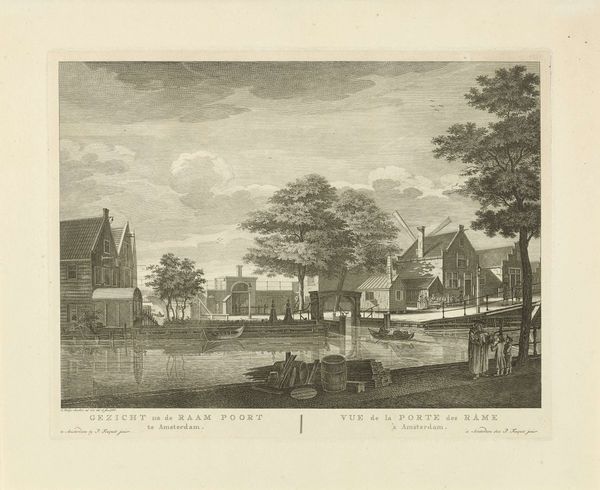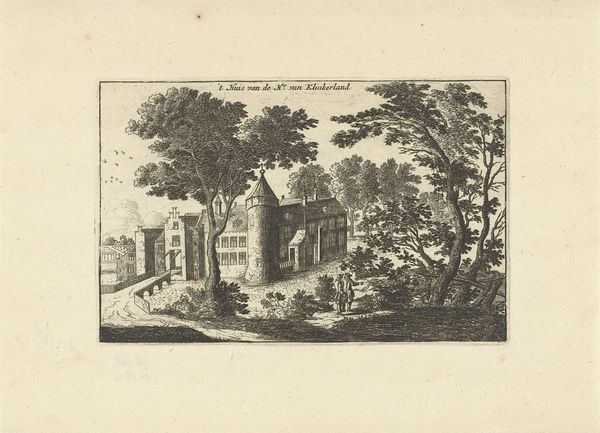
print, etching, engraving
#
neoclacissism
# print
#
etching
#
landscape
#
cityscape
#
engraving
Dimensions: height 270 mm, width 350 mm
Copyright: Rijks Museum: Open Domain
Editor: This is "View of the Armenian Church in Amsterdam," an etching and engraving by Hermanus Petrus Schouten, made sometime between 1770 and 1783. The detail is striking! The line work really gives depth to the architectural forms, especially how it reflects on the water. What can you tell me about it? Curator: As a print, its existence relies entirely on reproducible material processes. Note the layering of etched lines creating tones; these choices were intentional applications of labor and material. We can even examine the paper's make. And consider the economic forces driving its production: Was it made for widespread consumption, or for a select clientele? Editor: That’s an interesting perspective. I hadn’t really thought about it in terms of its production process so much. It seems so… effortless, the way the perspective draws you in. How do the printmaking techniques affect the overall feeling? Curator: Precisely! The widespread availability of prints at the time reflects evolving consumer culture and new visual markets. What statements about labour are being made with the inclusion of the pedestrians in the foreground, or the carefully placed boat, for example? Editor: I see your point! Perhaps this image isn’t just a neutral record of a building. I am considering now about its role in shaping perceptions of Amsterdam as a center for commerce. It feels like it emphasizes an active urban hub. Curator: Indeed! Consider the cultural and economic context. The production of prints for mass distribution speaks volumes about consumption. Every single deliberate detail informs our understanding, like how class intersects with the labor of art-making. Editor: This has completely changed how I view this artwork! It’s not just an image; it's a record of a whole system. Curator: Exactly. Paying attention to the materials and the making allows us to interpret how artwork functions as a historical document, reflecting its specific culture.
Comments
No comments
Be the first to comment and join the conversation on the ultimate creative platform.
